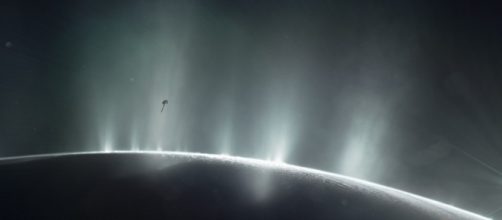New observations of active extraterrestrial oceans in our solar system were conducted during two missions launched by NASA and they were presented in two studies, in a press conference that was held on Thursday night at NASA headquarters in Washington. NASA has new evidence that two satellites of the planets Jupiter and Saturn may contain optimal conditions for the development of life, according to CNN. More exactly, they are talking about Jupiter's Moon, called Europa, and one of Saturn's moons, Enceladus.
In terms of potential of habitability, Enceladus is particularly close to all the key ingredients for life, according to researchers from NASA.
New studies about the Moons of Jupiter and Saturn
These observations were made after two large studies, detailed yesterday at a conference in Washington.
The discoveries were made with the help of the Cassini probe that revealed traces of hydrogen on Enceladus - Saturn's satellite.
Enceladus is the 6th biggest satellite of the planet Saturn and it was discovered in 1789 by William Herschel -- a British astronomer. It has a diameter of about 500 km and it is located at a distance of about 1.2 billion kilometers from the Earth.
According to researchers, Enceladus is a "world" wrapped in ice, which has an ocean beneath. Scientists believe that hydrogen comes from a hydrothermal reaction between the ocean of the satellite and its rocky core.
Waiter Hunter, the team leader who led the study of this moon, said that Enceladus - Saturn's moon - tops the list of places in the solar system that could have livable conditions.
Water on Jupiter's moon
One of the Moons of the planet Jupiter -- Europa - shows strong proof for an ocean of liquid water beneath its icy crust and it could have favorable conditions for supporting life.
This discovery was made with the Hubble Space Telescope. The Telescope showed plums of water that erupt in the warmest area of Europa, which has a crust of ice over an ocean with saltwater containing two times more water than all the seas from Earth.
Britney Schmidt, the second author of the study, said this discovery is something significant about the satellite Europe.
In the future, NASA will continue to use Hubble Space Telescope to monitor the hydrothermal activity of the satellite.
The mission Clipper Europe
Both discoveries are the basis of NASA's future mission Clipper Europe, which will take place in 2020.

